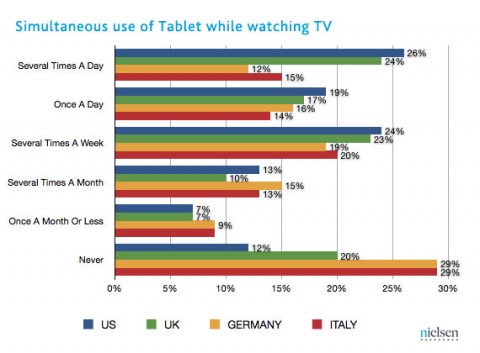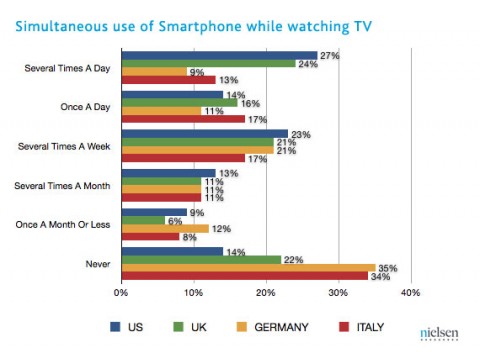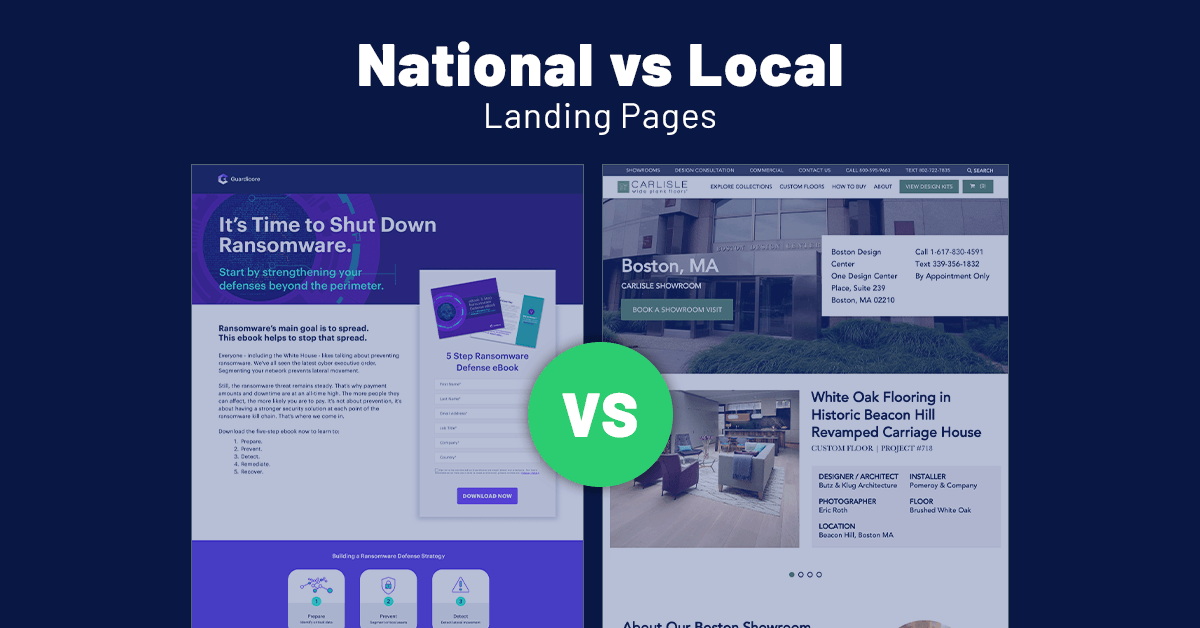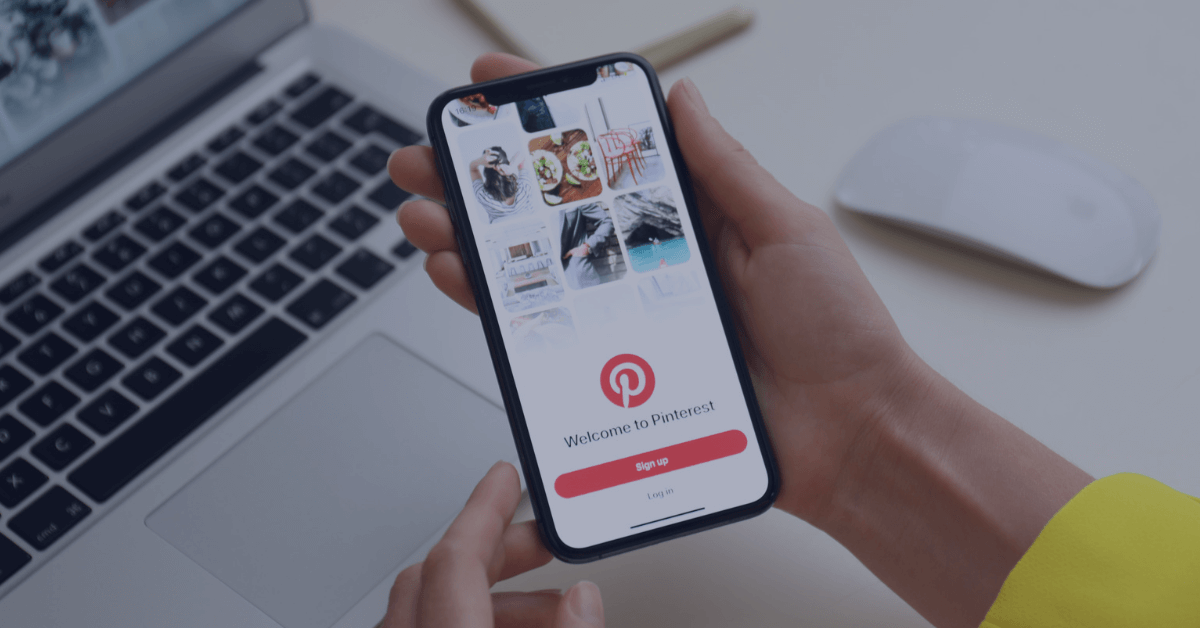The second screen is not new to consumers. In fact most of us have been switching focus between our television and our phones, tablets, or computers even before the habit was given a name. Although the second screen has been gaining its foothold for years now, marketers and networks are still struggling to figure out the best way to capitalize on the trend.
One way or another, the second screen is here to stay. This is a big deal for marketers and networks alike because we are not as good at doing two things at once as we think we are. Psychology fun fact: multitasking is impossible. It’s true. Our brains our incapable of splitting focus; we are not wired to work that way. We may be getting better at going back and forth between switching our focus in a fraction of a second, but at no point can we truly be focusing on two things at once.
And here is where the second screen comes in. We know that everyone is sitting in front of their televisions with their phone in their hand or their tablet on their lap. As much as we love to call ourselves mutlitaskers, we are only capable of paying attention to one screen at once. The winning screen is increasingly becoming the second screen.
Every major television event – the Super Bowl, the Olympics, the Oscars, and the 2012 election – come with their very own app for second screen viewing. Then there are the network apps (HBO, Showtime, and all the major networks) and even apps for specific shows. All of these apps create a problem for users, marketers, and networks alike.
As Somrat Niyogi points out in “Please Don’t Ruin the Second Screen,” there are simply too many of these apps. It is easy enough to create them, and therefore the space has become more than a little crowded. People are not going to download an app for every show they watch. It is confusing for users, distracting for marketers, and a waste of time for the networks.
One solution is to build a second screen viewing app that aggregates content and provides a central portal for all second screen experiences. But this is tricky because the second screen experience is personal. Is your second screen experience about social interaction, or is it about exclusive content? Or is it about something else entirely? Miso is a good start, but there are still some serious limits. To start with, the user needs to set a lot of the content up themselves which is more work than the average person may care to do at the end of their day. These apps are also combatting other tablet and phone activities such as browsing Facebook, email, Pinterest, and Twitter.
If a unified second screen app does appear and gain popularity, the possibilities for marketers are endless. Ads can be served via the app that are specifically tailored towards the user. Networks already try to out the most relevant ads on the air, but by adding the second screen users can learn about deals only in their area or highlight products used in the show a user is watching. If successful, this integration between the television and the second screen can also enable advertisers to link users’ TV watching behavior to their existing online profiles. And of course, the ads users are exposed to will not be limited to the commercial breaks because the app can serve a constant stream of text or display ads at all times. Users may even be permitted to set ad preferences similar to the Hulu model.
What do you think the second screen means for marketing and advertising?






